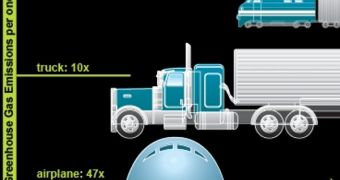Scientists at the Massachusetts Institute of Technology (MIT) show that up to 6 percent of the greenhouse gases being emitted in the world today could be reduced if corporations improve the flow and logistics behind their supply chains.
These gases are accounted for by the path merchandise take to get from manufacturer to customers. But these amounts could be reduced if companies would just take the time to make their operations more efficient.
One of the problems the MIT group identified is that not many corporations are interested in assessing the amount of GHG their operations emit in a thorough way. This is unfortunately the only means through which they can improve.
This investigation was authored by MIT professor David Simchi-Levi, who holds joint appointments at the MIT Engineering Systems Division and the Department of Civil and Environmental Engineering.
He expands on his idea in a book published by MIT Press this autumn, called “Operations Rules.” The work places emphasis on providing solutions that companies can better use to manage their emissions.
“This is a big problem. If you just do back-of-the-envelope calculations about logistics, supply chains and emissions, you can arrive at misleading conclusions,” the expert says.
He adds that reducing the carbon footprint of logistics chains can easily be achieved by using readily available data and analytics techniques. Some companies today use the concept of food miles to account for their emissions, but that can lead to incorrect conclusions.
“Food miles can be a misleading criteria when you think about the impact on the environment,” says Simchi-Levi, explaining how a bottle of wine brought from France to New York can have a lesser impact than sending a bottle of the stuff from New York to California.
The reason for this is that the domestically-produced wine will travel more by truck than the one made in France, which arrives in New York by ship, consuming less fuel.
Statistics show that using trucks to move a ton of goods can release 6 times more GHG than using the railroads, and about 10 times more pollution than using ships.
But the worst offender is the air freight system. While it does deliver goods faster, it releases about 47 times more GHG than an ocean freight, Simchi-Levi says,
“Distance does not simply equal a higher carbon footprint,” he says. Several factors that should also be taken into account include fuel-generated emissions, fuel efficiency, consumed energy at distribution centers, and the emissions related to product packaging, among other.
It's only in this way that companies will be able to detect the actual extent through which their operations affect the environment.
Video credit: MIT News Office

 14 DAY TRIAL //
14 DAY TRIAL //